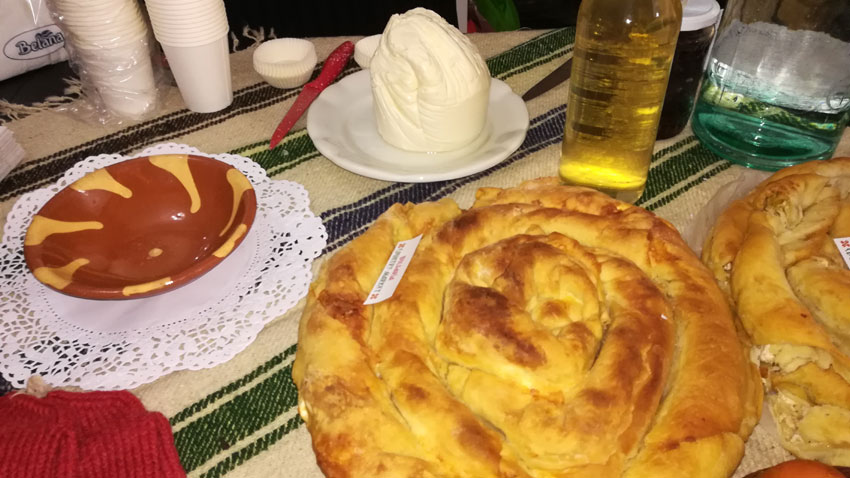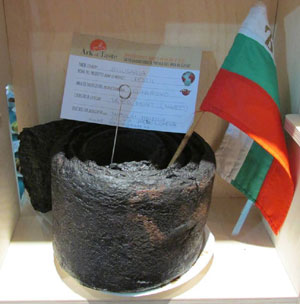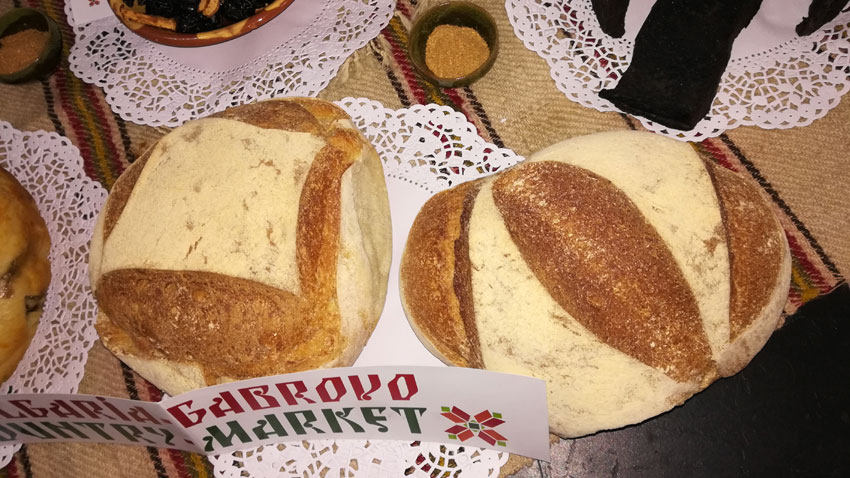The Gabrovo country market is not a shiny pompous market with shops and offices situated in the center of a Bulgarian village. It is rather a bazaar-exhibition, which has already gained huge popularity. The idea of the Gabrovo country market belongs to four community centers from villages and residential districts near Gabrovo and was implemented in 2014. The country market offers homemade food, rural produce, organic and healthy food without nitrates, preservatives, additives and coloring agents. People can also find at the country market craft goods produced under authentic traditional technologies:
“The country market starts with an open stage first, Margarita Stoyanova who works as a secretary at the Hristo Botev 2008 community center in the village of Garvan told Radio Bulgaria. Amateur formations present their artistic skills, vocal and dance art and verbal creativity at this stage. Besides, many traditional items such as the Gabrovo wooden-bowls, homemade woolen knitwear, pickles, seasonal fruit and vegetables, canned food, dried fruits and traditional thick plum jelly are displayed at the village bazaar. We believe that our cultural heritage should be linked to the Bulgarian tradition of healthy lifestyle and nature-friendly production. For instance, people used to dry fruits in the sun without using electricity and white sugar. We kept this tradition and offer sun-dried fruits as well."

Thanks to the local community centers the founders of the so called “village mall” met people who managed to preserve the ancient crafts. In one of the villages near the town of Sevlievo craftsman Todor (nicknamed The Spoon) continues to make wooden spoons with a chisel and has never used a wood-turning lathe for his wooden items. His produce sold at the village bazaar is a demonstration of this ancient craft. Aunt Stanka makes sugar cockerels under an ancient family recipe. Of course the most attractive product offered at the country market is the local plum jelly Bulgarians call Pestil. It is a thick and layered jam made under the following recipe:
 Our traditional thick jelly is made of plums. Once, the local people used to make this jelly of a traditional sort of plums with high sugar and low water content known as Karadzheyki. How, we use other hybrid sorts, because most of the old traditional sorts have withered. To make the traditional thick plum jelly you need to boil and thicken the plums without using any additional sugar. Then, the mixture is spread over a flat wooden board in thin layers. When the first layer cools down and dries out you need to turn the layer upside down and pour another thin layer of the plum jelly over it. You repeat this procedure until you have six layers of thin plum jelly. Then you leave the jelly to dry out in a dark, dry and well-ventilated place. Later, remove the product from the wooden board and roll it. We start making plum jelly in September and several months later it is ready for consumption.
Our traditional thick jelly is made of plums. Once, the local people used to make this jelly of a traditional sort of plums with high sugar and low water content known as Karadzheyki. How, we use other hybrid sorts, because most of the old traditional sorts have withered. To make the traditional thick plum jelly you need to boil and thicken the plums without using any additional sugar. Then, the mixture is spread over a flat wooden board in thin layers. When the first layer cools down and dries out you need to turn the layer upside down and pour another thin layer of the plum jelly over it. You repeat this procedure until you have six layers of thin plum jelly. Then you leave the jelly to dry out in a dark, dry and well-ventilated place. Later, remove the product from the wooden board and roll it. We start making plum jelly in September and several months later it is ready for consumption.
The Gabrovo country market is held 7-8 times a year. However, it is also popular outside the Gabrovo district. It was held in the towns of Sevlievo and Elena as well and in 2016 was presented in Brussels together with the Gabrovo Pestil thick plum jelly and other items produced in the Gabrovo region.
“People have been always interested in the local traditions and our bazaar. They love to attend the country market and join the horo dance, listen to some good music, try homemade food, buy something and recall moments from their childhood. The elderly people still keep their family traditions through food. The money raised at this bazaar is used for some of the causes of the local community centers.”

Margarita Stoyanova presented within the frameworks of the Days of the Intangible Cultural Heritage at the Sofia City Library traditional thick plum jelly, traditional bread (made under a local recipe using natural sour dough), homemade cheese, cheese pastry (made in Gabrovo with curds), dried fruit, homemade rakia brandy, elder syrup and other delicious and beautiful items under the motto Forgotten Culinary Traditions, Living Tastes. The project has been fulfilled by the Regional Center for the Safeguarding of Intangible Cultural Heritage in Southeastern Europe under the auspices of UNESCO and the Sofia City Library. It is carried out with the financial assistance of Sofia Municipality.
English version: Kostadin Atanasov
Photos: Desislava Semkovska and private libraryThe Bulgarian minority in Romania marked a significant event with the official opening of the Bulgarian Inn in the village of Izvoarele (Hanul Bilgarilor), Teleorman County (Southern Romania)- a locality with Bulgarian roots dating back over 200 years...
The 14th edition of DiVino.Taste, Bulgaria’s leading forum for wines and winemakers, will take place from 28 to 30 November at the Inter Expo Centre in Sofia. Over 80 producers from all wine regions will participate, offering tastings of around 600 of the..
Minutes before the second and final reading, at the parliamentary budget and finance committee, of the state budget for 2026, the leader of the biggest party represented in parliament GERB Boyko Borissov halted the procedure and sent the draft bill..
The Bulgarian minority in Romania marked a significant event with the official opening of the Bulgarian Inn in the village of Izvoarele (Hanul..

+359 2 9336 661
